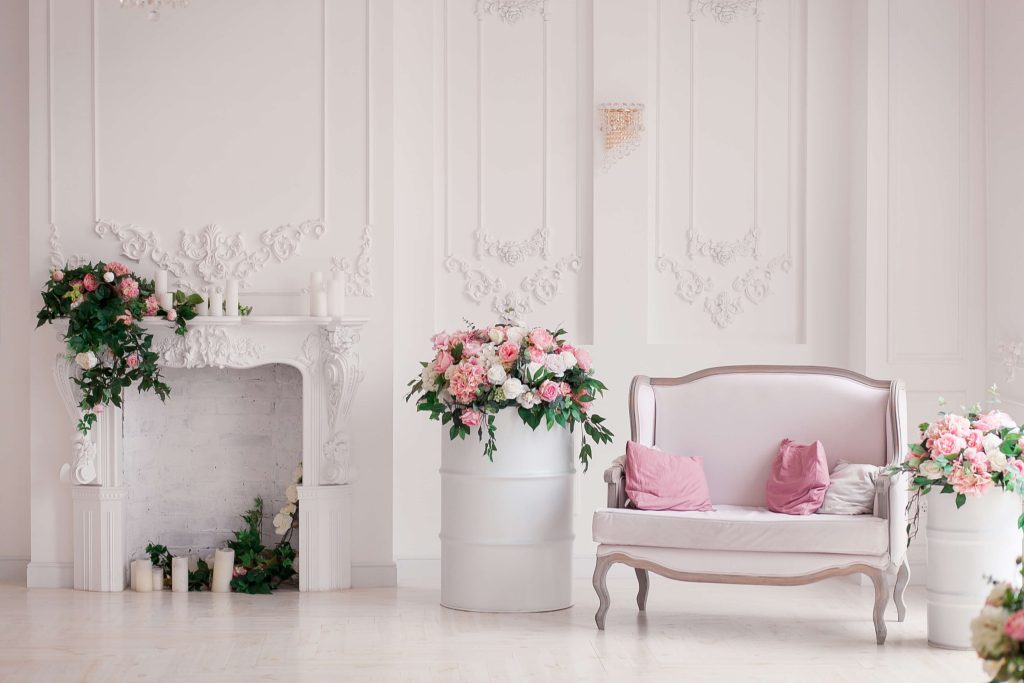Gypsum decoration: A Classic Touch of Elegance
Gypsum decoration, or plaster decoration, has been used since ancient times. And is still widely used today in both historic restoration and new construction projects. Gypsum is a versatile material that can be molded into a wide variety of shapes and designs. This is making it an ideal medium for creating intricate decorative elements. Plaster decorations can be used to add visual interest to a wide range of architectural features. From simple cornices and moldings to elaborate ceiling medallions, rosettes, and ornamental friezes. Plaster decorations can also be painted or gilded to create a wide range of decorative effects.

Different gypsum decoration forms
This kind of decoration can take many forms, from simple moldings and cornices to intricate, detailed bas-reliefs and sculptures. The process of creating gypsum decorations involves pouring a mixture of gypsum plaster and water into molds. Which are typically made of wood, metal or silicone. Once the plaster has set, the mold is removed. And the gypsum decoration is carefully removed and installed onto the desired surface.
The process of gypsum decoration involves applying a layer of plaster to the surface of the walls or ceilings. And then carving or molding the plaster into the desired design. The plaster is typically applied in multiple layers to create a smooth and even surface. Once the plaster has dried, it can be painted or left in its natural white color, depending on desired look.
Advantages of using gypsum for decoration
One of the advantages of using gypsum for decoration is its versatility. Gypsum plaster can be cast into a wide range of shapes and sizes. Making it suitable for creating decorative elements of varying complexity. Additionally, gypsum is a relatively lightweight material. Which makes it easier to install than heavier materials such as stone or metal. Another advantage of gypsum decoration is its durability. When properly installed and maintained, gypsum decorations can last for many years without cracking or deteriorating. Gypsum is also fire-resistant, which makes it a popular choice for decorative elements in buildings that require fire-resistant materials.
Gypsum usage in construction
Using gypsum for the decoration can be found in many different types of architecture. From ancient Egyptian and the Roman buildings to modern-day homes and commercial buildings. Some examples of gypsum decoration include ornate plaster ceilings in grand ballrooms, decorative columns and pilasters in the neoclassical architecture. and the intricate bas-reliefs and friezes in the Gothic and Art Nouveau styles.
Gypsum decoration can be used to create wide variety of designs, from simple geometric patterns to intricate, highly detailed motifs. The technique’s often used in traditional and classical interior design styles. But it can also be adapted to suit more modern and contemporary spaces. In addition to its decorative uses, gypsum has many practical applications as well. Gypsum plaster is commonly used for creating smooth, level surfaces on walls and ceilings. And it’s also used as a base for painting and wallpapering. Gypsum board, also known as drywall, is a common building material used for constructing interior walls and ceilings.
Overall, gypsum decoration is a versatile and durable form of ornamental plasterwork. That has been used for centuries to add beauty and style to buildings of all types. From simple moldings to intricate sculptures, gypsum decorations can be found in a wide range of architectural styles and settings. And they continue to be a popular choice for decorative elements in modern-day construction and design.

Common mistakes to avoid when installing gypsum decorations
Installing gypsum decorations requires skill and attention to detail. And there are several common mistakes that should be avoided to ensure a successful installation. Some of these mistakes include.
- Improper surface preparation. Before installing gypsum decorations, it’s important to ensure surface is clean, dry, free from any loose or flaking materials. Failure to properly prepare the surface can result in poor adhesion of the plaster, leading to cracking or peeling.
- Inadequate support. Gypsum decorations can be heavy, so it is important to ensure that the underlying surface can support their weight. If the surface is not strong enough, the decorations may sag or fall off over time.
- Inaccurate measurements. Gypsum decorations are often custom-made to fit a specific space. So it is important to take accurate measurements and ensure that the decorations fit properly. Failure to do so can result in unsightly gaps or overlaps.
- Improper mixing of plaster. Gypsum plaster must be mixed according to the manufacturer’s instructions to ensure that it sets properly. Improper mixing can result in weak or brittle plaster that is prone to cracking or breaking.
- Rushing the installation. Installing gypsum decorations requires patience and attention to detail. Rushing the process can result in mistakes or uneven application of the plaster.
- Failure to use appropriate tools. The tools used for installing gypsum decorations, such as trowels and spatulas, must be appropriate for the job. Using the wrong tools canresult in uneven application of the plaster or damage to the decorations.
- Ignoring safety precautions. Working with plaster can be messy and potentially hazardous. It is important to wear appropriate safety gear. Such as gloves and eye protection, and to follow all safety precautions recommended by the manufacturer.
Example of a modern building using gypsum decoration
One modern building that uses gypsum decoration is the Burj Al Arab hotel in Dubai, United Arab Emirates. The hotel’s interior features ornate gypsum decorations throughout, including intricate bas-reliefs, moldings, and gypsum cornice. The gypsum decorations were created by skilled artisans and craftsmen, and their intricate designs complement hotel’s luxurious and opulent atmosphere. The Burj Al Arab is considered one of the most iconic and luxurious hotels in the world. And its use of gypsum decoration is just one example of the many elements contribute to its grandeur and beauty.
Al Ahli Company: A Leading Producer of High-Quality Gypsum Products
Al Ahli Company is a well-known producer of gypsum products, including gypsum powder, which is used in the construction industry. In order to create decorative elements such as ceiling tiles, cornices, gypsum wall and wall panels. The company is based in Dubai and has a long history of providing high-quality products to customers around the world.
In addition to supplying the domestic market in the United Arab Emirates. Al Ahli Company also exports its products to other countries in the region and beyond. Tanzania and Kenya are among the countries that import gypsum products from Al Ahli Company. Reflecting the popularity of gypsum decoration in those regions.
Overall, the use of gypsum for decoration is a global phenomenon. With companies like Al Ahli playing an important role in providing high-quality products to meet demand for this attractive material. If you want to buy gypsum powder from Al Ahli, the best way would be to contact us directly. And inquire about their ordering process.
